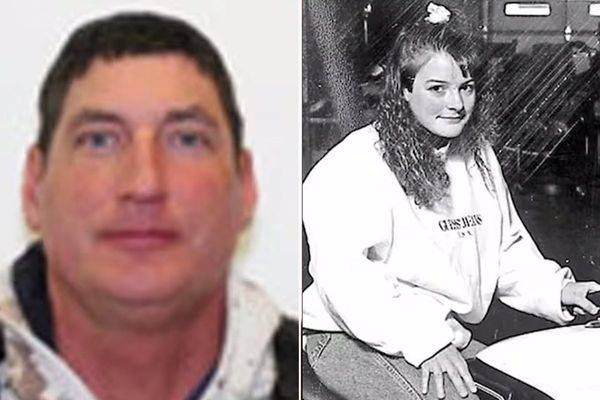Arts industry bodies are holding out for substantive funding announcements with the launch of the National Cultural Policy later this year, after the first budget from the Albanese government contained little support for the sector.
Speaking to ABC Arts the morning after Treasurer Jim Chalmers revealed the October budget, Live Performance Australia (LPA), National Association for the Visual Arts (NAVA) and Screen Producers Australia (SPA) all said that they did not expect any windfalls from the budget.
But they each point to funding gaps they would like to see addressed in the forthcoming policy announcement.
Arts Minister Tony Burke tried to temper expectations ahead of the budget, telling The Monthly and The Saturday Paper's 7am podcast earlier this month, "Don't expect much in the October budget at all."
Instead, announcements about arts and cultural funding are expected in December, with the release of the National Cultural Policy.
However, writer, researcher and policy advisor for advocacy group Fund the Arts Ben Eltham says the absence of the arts from the budget is a "missed opportunity" to reset the conversation about arts funding in Australia, after a decade of austerity.
"Federal funding levels for the arts are in a pretty parlous state," he says.
"They're low and declining. And that's notwithstanding the significant amounts of stimulus that [former Arts Minister] Paul Fletcher and the Morrison Government did do during the pandemic, but all that stimulus has ended now.
"There's a clear need [for more funding] at present particularly in the performing arts. We know that the sector's still hurting."
What IS in the budget when it comes to arts?
The budget promised $36.8 million over four years from 2022-23 to 2025-26 to support the arts sector.
Big-ticket items include the already-announced $22 million to establish a temporary Live Performance Support Fund for live events such as plays, concerts and festivals impacted by COVID-19; and a commitment of $2.4 million for Bundanon Trust, which runs an art museum in regional NSW at the site of artist Arthur Boyd's former home and studio.
Other beneficiaries include national performing arts training organisations, with a total of $2.4 million over four years allocated to the Australian Ballet School, Australian National Academy of Music, Australian Youth Orchestra, Flying Fruit Fly Circus, National Aboriginal and Islander Skills Development Association Dance College (NAISDA), National Institute of Circus Art, and National Institute of Dramatic Art (NIDA).
That's in addition to 2022-23 spending of $5 million for NIDA, and $5 million for upgrades to NAISDA facilities.
Creative Partnerships Australia, a government-funded non-profit facilitating private sector investment in the arts, has been abolished, with its functions and funding ($15.3 million over three years, starting in 2023-24) transferred to the Australia Council.
In a statement released on budget night, Burke said the decision would "expand the Council's remit to work more closely with philanthropists and philanthropic foundations, as well as the corporate and commercial sectors".
The Temporary Interruption Fund, set up in 2020 to provide COVID-related insurance for new local productions, has been extended to mid-2023.
But over the forward estimates, funding for the arts and for cultural institutions will fall from $859 million in 2022-23 to $783 million in 2025-26.
A funding cut to regional arts from the previous government's March budget also remains in place, with funding in 2022-23 dropping by more than $10 million against 2021-22 levels.
Skills and training
There are areas outside of the arts portfolio where artists, arts workers and arts companies could stand to benefit from the budget.
The government has committed $12.9 million over three years to establish Jobs and Skills Australia, an independent agency bringing together state and territory governments, industry, employers, unions and education providers to address workplace shortages and skills and training needs.
In light of the exodus of artists and arts workers from creative industries due to COVID-19, chief executive of Live Performance Australia Evelyn Richardson says she "welcomes" this investment in national performing arts training institutions.
However, she also hopes the government will create a skills package for the arts.
LPA's submission to the National Cultural Policy outlined a case for subsidised traineeships, industry-led initiatives, and investment in short-term courses.
"We've got significant work to do to build our skills base," Richardson says.
"We did lose a lot of people, particularly technical and production and stage management people, during COVID."
The industry is already working on initiatives to train and re-train workers – and to share skilled staff, she says.
"Everybody has this problem, whether you're a small company, a medium company, or a large commercial enterprise, everybody is looking for staff, and sharing [staff] where they can."
Live Performance Australia is also calling for tax incentives – similar to the producer offsets that exist in the screen industry – to encourage overseas investment in theatre productions in Australia.
"If you look at large-scale commercial work in Australia, 80 per cent of that funding comes in from offshore. We're competing for that funding with the US and the UK, all of whom have tax incentives in place for theatre production … We need to be competitive in a global market," says Richardson.
Stability and wellbeing
Screen Producers Australia CEO Matthew Deaner says one of the key measures in the budget is the restoration of $83.7 million in funding for the ABC.
In 2020-21, the ABC invested $43 million in the production of Australian TV dramas, and produced six out of seven locally produced children's TV dramas (collectively, Seven, Nine and 10 spent $54 million).
"Anything that helps create stability for the ABC is a good thing for [the production industry], given how important it is as a commissioner of work," says Deaner.
He also praises the government's conception of a "wellbeing" budget – one that measures not only GDP and income per person, but people's quality of life.
Deaner says wellbeing encompasses people's sense of identity and culture, especially for children and young people.
"[Children should have] the opportunity to see themselves reflected back, and content that's tailored for them," he says.
SPA continues to advocate for the return of locally made children's TV quotas for free-to-air networks, after they were removed by the Morrison government in 2020.
It is also pushing for greater regulation of streaming services, so that they have an obligation to reinvest 20 per cent of the revenue they make in Australia into producing Australian content.
"We haven't had a framework properly addressing the huge, dominant layer of streaming services that are in our environment, but not doing and carrying a lot of Australian work," Deaner says.
Including visual artists
The National Association for Visual Arts has expressed disappointment that pandemic relief initiatives created to support screen and live performance have not been extended to visual artists and galleries.
NAVA executive director Penelope Benton says: "Artists and galleries are still impacted by the pandemic," using the example of artists unable to finish an artwork or deliver an exhibition due to illness – which in turn affects galleries.
She says that support should also be expanded to artists and galleries impacted by extreme weather events, such as flooding in the Northern Rivers.
"So many visual artists and art galleries have fallen through the cracks of pandemic support and disaster recovery from recent extreme weather events linked to climate change. They are in a great deal of financial strain and a lot more needs to be done," she says.
NAVA is also calling for $133 million in peer-assessed arts funding for independent visual artists and small-to-medium organisations through the Australia Council, and a legislated award for the visual arts sector.
"Most artists and arts workers have missed out on the government's steps to boost wages and job security," Benton says.
She also sounded a note of caution about the infrastructure funding allocated to Aboriginal art galleries, which includes $80 million for the National Aboriginal Art Gallery in Alice Springs and $50 million for the Aboriginal Cultural Centre in Perth.
"There's no new investment in artists to create new content for these spaces or for people to work there," she says.
As part of its submission to the National Cultural Policy, NAVA has called for a national strategy to increase "First Nations visual arts and crafts employment and representation in middle-tier jobs, leadership roles, boards, and Aboriginal advisory groups in remote, regional and urban areas".
Benton says: "There's a crisis, a skills shortage, that needs urgent attention."
Looking forward
For now, hope for increased arts funding lies with the forthcoming National Cultural Policy.
Arts advocate and consultant Esther Anatolitis sees this week's budget as "preparing the groundwork" for that plan, which is due to be delivered by the Arts Minister in December.
This policy requires cross-portfolio collaboration, with arts and culture embedded in policies in other areas, such as education and industrial relations, she says.
"What's a model that might also have industry and artist input that's going to allow the government to achieve multiple things across multiple different portfolio areas? That's the work they need to be doing right now."
This kind of comprehensive approach is needed, Anatolitis says, because of challenges the sector faces: in arts education, the way technology and the pandemic have changed how we work, a lack of basic building maintenance at cultural institutions (as well as efficiency dividends), and the stagnation or reduction of artists' average incomes.
"Everything that can be wrong is wrong at once," she says.
Ultimately, Anatolitis says, the solution is not just policy, but investment.
"That investment, in the work that artists do and audiences enjoy, is going to be repaid to the nation in a magnificent cultural dividend."
EDITOR'S NOTE: November 29, 2022: The original version of this story reported that Bundanon Trust and NIDA each received $7.4 million in funding in the budget. In fact, Bundanon Trust received $2.4 million and NIDA received $5 million. The article has been amended to reflect this.







